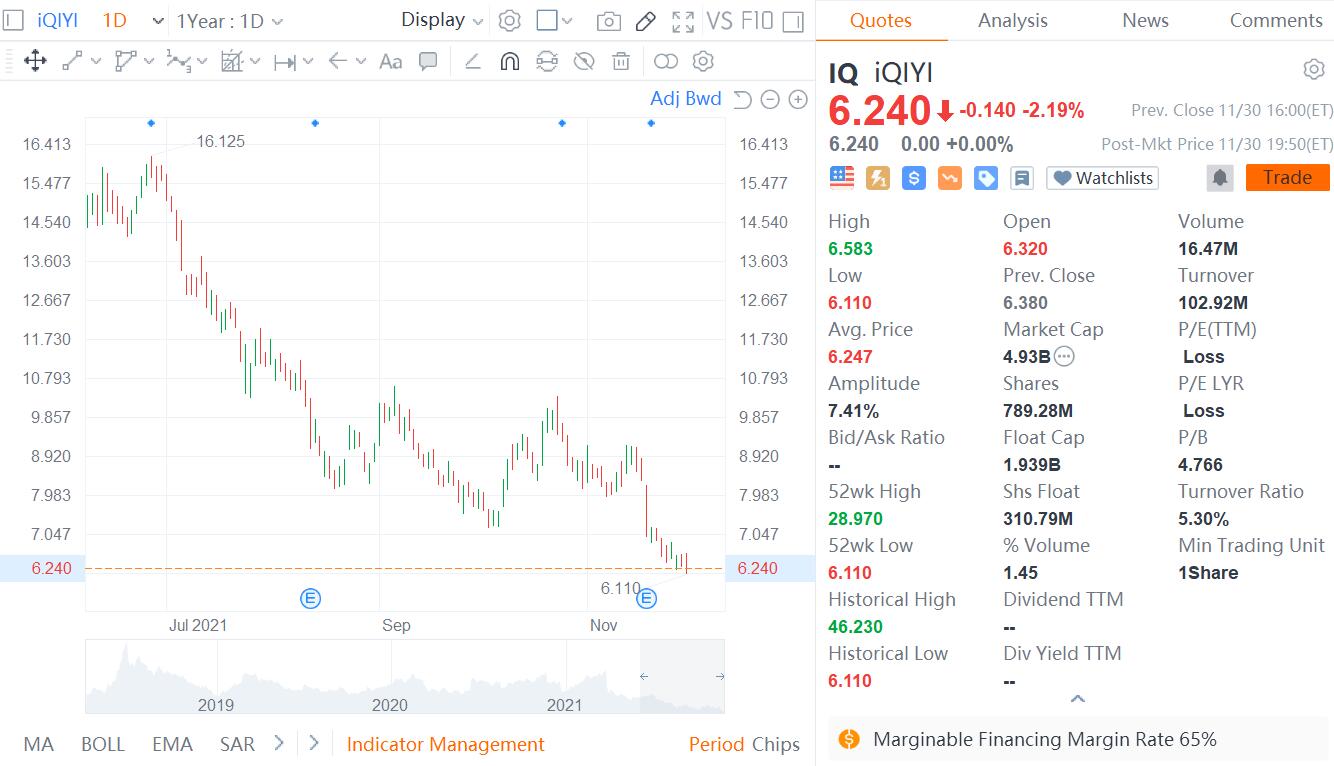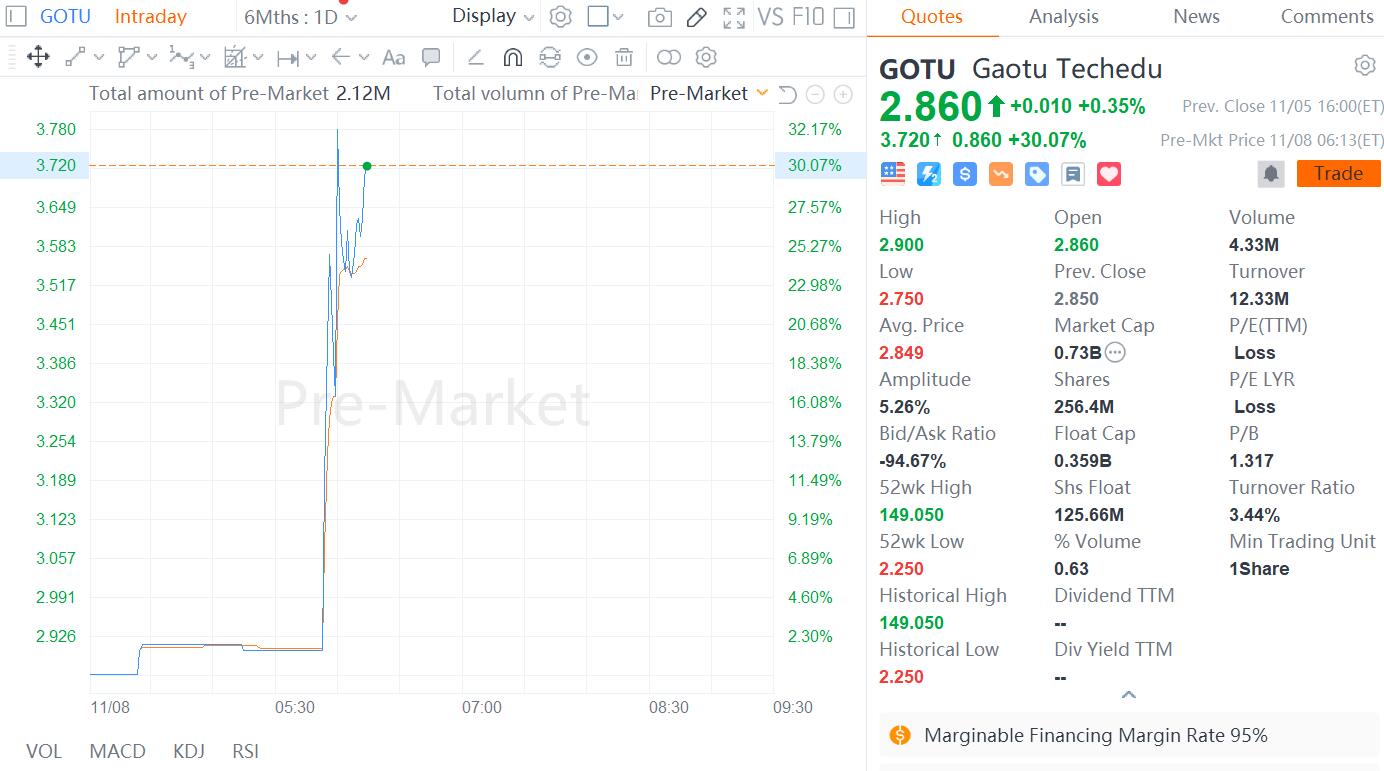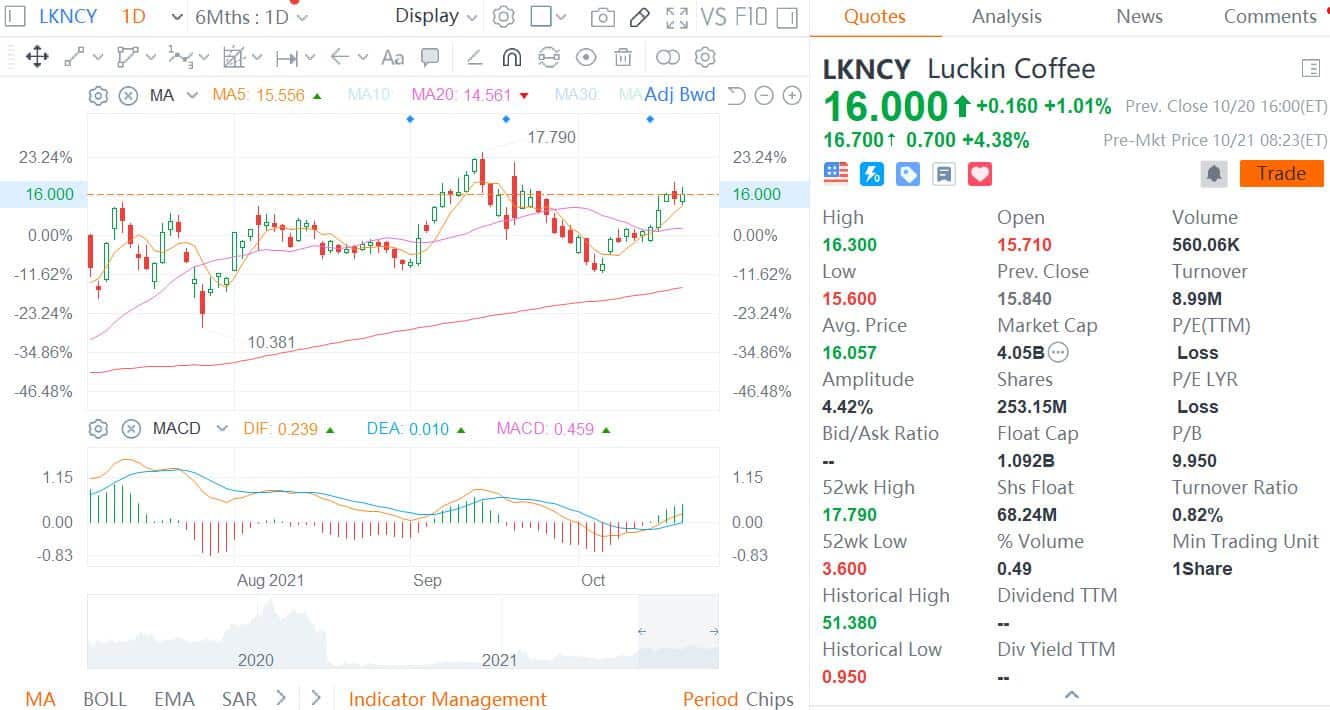Professor Jin Dongyan, a molecular virologist from the University of Hong Kong's Li Ka Shing Faculty of Medicine, shared the theme of "The Past and Present of Human Coronavirus" online today.
Explore and analyze what are the human coronaviruses? Which animals do they originate from and what diseases do they cause in humans? What is the direction and end of the global pandemic? Waiting for everyone's concern.
Regarding how to prevent and control Hong Kong now, Jin Dongyan replied that Hong Kong is still strictly guarded against death. We are now testing asymptomatic or symptomatic for all people entering the country and isolating asymptomatic infected persons as confirmed To prevent and control.
Full text of Jin Dongyan's speech:
Jin Dongyan: I am Jin Dongyan from the University of Hong Kong. I have been working on viruses and immunity, virus and cell interaction for many years.
The topic I share with you today is "The Past and Present of Human Coronavirus". The new coronavirus pneumonia is the seventh human coronavirus.
Let's talk about the past and present of these human coronaviruses, where did they come from? What will happen in the future? To make a review, also put forward some prospects.
We must first say that human coronaviruses are from animals, followed by the structure of the coronavirus genome and the characteristics of their replication, and what are the characteristics of this new coronavirus pneumonia disease, related specific diagnosis and treatment, What can we expect from the development of new antiviral drugs and vaccines?
I will focus on the storage and intermediate hosts of human coronavirus. In the natural storage host, there are a large number of different types of viruses, which generally do not cause disease or cause very mild symptoms.
The intermediate host often refers to the host from the storage host to the human or to the new host. The intermediate host is not necessarily the storage host of the virus, but the intermediate host may become the storage host after a period of adaptation.
This concept seems to be more complicated. For example, the reservoir of HIV is the chimpanzee or the white-headed mangabee, and the reservoir of influenza virus is mainly waterfowl.
We will explain the storage and intermediate hosts of human coronavirus in turn.
HIV is the most well-researched virus in the world in history. Many of our scholars studying other viruses can learn some methods or ideas from HIV research, so we can focus on reviewing what we have learned from HIV research. thing.
By the way, I will also focus on the research of new coronavirus drugs, the existing drugs and the future development direction of drugs.
This is the first time in history that such a huge change has been recorded in such a short time.
This time from the announcement of the discovery of a new coronavirus on December 31, 2019 to today, we have truly witnessed this virus for more than three months. From the discovery to the occurrence of a global pandemic, the development of the epidemic has been recorded so far the first time.
In this process, Chinese scientists have made many contributions. For example, we announced the discovery of a new virus on December 30, determined the nucleic acid sequence on January 12, and then quickly shared the data with the world.
Of course, there are also shortcomings. Before January 20, we did not have a good grasp of the prevalence of the virus, which is worth summing up in the future.
In general, we have done well, and we have not done enough. The World Health Organization announced the global pandemic of the new coronavirus pneumonia on March 11, and Wuhan was unsealed on April 8. The current timeline is like this.
There are several names here, SARS-CoV-2, which is the name given to the new virus by the International Virus Naming Committee.
Of course, some scientists have different opinions on this. For the sake of specification, we still call it SARS-CoV-2, and the other name is 2019 new coronavirus.
The World Health Organization calls it the 2019 coronavirus disease, which is COVID-19, and the two proper terms SARS-CoV-2 and COVID-19 will be mentioned in the lecture.
The structure of coronavirus (picture), taking SARS coronavirus as an example, SARS-CoV-2 is very similar to it.
The yellow in the structure corresponds to the fibrillar protein, the green is the nucleocapsid protein, and the gray is the membrane protein. These are structural proteins.
Most of its genome at the 5 'end is the open reading frame 1 (ORF) 1ab, which is a replicase, and then the relative position of some protein coding regions in the genome.
In addition to the above, this virus also contains some small proteins, ORF6, ORF7a, ORF8, ORF10, etc. These proteins are pedigree-specific and are mainly accessory proteins responsible for interaction with the host.
This coronavirus is a single-stranded RNA virus with about 30,000 nucleotides.
Its replicase will be hydrolyzed by host proteases and become a variety of non-structural proteins.
This picture summarizes the animal origin of human coronavirus.
There are seven types of human coronaviruses, the earliest of which are two types, one is 229E and the other is OC43. Later, SARS appeared in 2003, and MERS appeared after 2012.
Coronaviruses have received less attention in the past, and there has been less research for a long time. The main reason is that everyone thinks that the coronavirus will only cause a common cold, which is even weaker than the flu, which is the case with 229E, and the same is true for OC43.
However, the emergence of SARS in 2003 completely subverted this concept, and the lethal rate of SARS reached nearly 10%. Later, MERS occurred, which is a serious respiratory virus, the Middle East Respiratory Syndrome virus, which was found in the Middle East.
MERS is more pathogenic than SARS, with a case fatality rate of 35% to 40%, which has changed the understanding of coronavirus in humans.
After the outbreak of SARS in 2003, two teams of Hong Kong scientists and Dutch scientists discovered two new human coronaviruses, one called HKU1 and the other called NL63.
These two viruses, like the previous two, only cause a common cold. Therefore, these four viruses (HKU1, NL63, 229E, OC43) do not need other animal hosts, and appear in the human population all year round. We call it the community-acquired human coronavirus.
The seventh virus is the new coronavirus SARS-CoV-2 discovered this time.
I think that the new coronavirus is a new virus between these two types of viruses. It has the characteristics of both, so which direction it will go in remains to be studied and observed.
These human viruses, after years of research, especially the research of Professor Yuan Guoyong of the University of Hong Kong, Professor Wang Linfa of the National University of Singapore and Duke University, and Professor Shi Zhengli of Wuhan Virus Institute, clearly show that these coronaviruses come from bats. These five species are definitely from bats, so bats are the reservoir of these viruses.
Some of them also know their intermediate host, the clearest is the intermediate host of the MERS dromedary. The intermediate host of 229E may be an alpaca or a camel, or it may directly infect people from bats.
Professor Guan Yi found that the intermediate host of SARS-CoV was civet cat. The intermediate host of SARS-CoV-2 may be a pangolin, but it is inconclusive, and we will explain it in detail later.
0C43 and HKU1 are generally considered to come from rodents, and an important intermediate host of 0C43 is cattle.
Let's go back and talk about the MERS-CoV intermediate host dromedary. MERS-CoV was originally derived from bats, but the virus has adapted in the camel, so the camel has changed from an intermediate host to a storage host.
The virus is less pathogenic after infecting camels and will not kill the camels. There is an important message to remind everyone that these four human coronaviruses, which now only cause the common cold, how were they used to be?
There are historical clues that OC43 spread from cattle to humans around 1890, and the OC43 virus in cattle is very similar to humans. There was also a global pandemic of respiratory viruses around 1890, and the symptoms were somewhat similar to SARS-CoV-2, which was more serious.
So there is a view that these four viruses that only cause the common cold, when they were first transmitted from animals to humans, also caused a global pandemic with more severe symptoms than now. This is also a review of human coronavirus History gives us some inspiration.
Evidence that human coronavirus originated from bats was first discovered by Chinese scientists. After the SARS in 2003, many scientists still insisted on tracing and doing in-depth research instead of staying on the surface. These are very worthy of our admiration.
These two groups of main scientists, the first group is Professor Yuan Guoyong, Professor Hu Zhaoyi and Professor Liu Jiayu of the University of Hong Kong.
The other group was Professor Wang Linfa in Australia at the time, and Professor Shi Zhengli was also in his laboratory.
Professor Shi Zhengli has since insisted on studying bat virus and is one of the most outstanding scientists in this field in mainland China.
The groundbreaking contributions of their two teams show that bats are an evolutionary storage host for multiple human coronaviruses.
Of course, in addition to coronaviruses, bats are also storage hosts for many other human viruses.
The bat has some characteristics. It is the only mammal that can fly. It has a particularly strong anti-viral ability and produces a lot of interferons after infection.
Dromedary camel is the intermediate host of MERS coronavirus. MERS virus is found in dromedary in the Middle East all year round. It changes from intermediate host to storage host.
SARS-CoV is only found in civet cats in specific wildlife markets, and civet cats have symptoms after infection. No SARS virus can be found in farm-raised or natural civet cats.
Therefore, it is inferred that civet cat may be a transient intermediate host of the SARS virus, and its important role is to expand the scale of human infection by passing the virus to humans.
MERS-CoV is transmitted from person to person repeatedly by camels, and it spreads in people limitedly, but does not gain a foothold in people.
SARS is also the same. We have taken decisive measures to control the civet, and there will be no more cases of civet transmission to people.
This is not the case with MERS. The people in the Middle East have too close a relationship with camels. They cannot kill all camels, so from 2012 until now it has been spreading to people.
This is the case of MERS and SARS. These two viruses will not continue to spread in humans and will no longer exist after several generations.
What is the situation with SARS-CoV-2? Shortly after the discovery of the virus, Professor Shi Zhengli found a virus with 96% homology to SARS-CoV-2 in the Chinese chrysanthemum.
This situation is very similar to SARS-CoV. Professor Yuan Guoyong and Professor Wang Linfa have also found viruses with 95% homology to SARS-CoV in bats.
For the intermediate host, a virus similar to the human SARS virus found in the civet cat is almost 99.9%.
But among pangolins, especially pangolins smuggled from Malaysia or Southeast Asia to China, the β-coronavirus and SARS-CoV-2 carry only about 90% homology, which is lower than bat virus.
But it is not to say that there is no contribution at all. Its receptor binding domain is similar to human SARS-CoV-2.
So, the relationship between the two viruses found in bats and pangolins and the SARS-CoV-2 found in humans needs more research to answer.
Many of us who study viruses think of finding answers or inspiration and ideas in HIV.
I will quickly introduce how HIV came from animals.
After years of tracing by many virologists, they found that there are currently two types of HIV in humans: HIV-1 and HIV-2.
Among them, HIV-1 comes from chimpanzees, and HIV-2 comes from the white-topped mangabey.
However, after further tracing, it was found that there is a very complicated relationship. HIV-1 is transmitted to humans by chimpanzees, but the infection has actually occurred many times. Among them, group M has the largest number of infections, group O is the second, and N is only a few people.
HIV-2 has also occurred many times, but only once or twice have survived in the crowd.
We compared the differences in their genomes, evolutionary relationships, geographic location, etc., and finally found out the reason why people eat animals or use them as pets to cause the virus to spread from animal to human.
We compared the whole genome of the host and the virus and found that the new coronavirus pneumonia virus and the bat RaTG13 are the closest, which is far more similar to the pangolin in Malaysia.
But if we only compare their receptor binding domains, we will find that the new coronavirus is more similar to pangolins than that of the head bat.
The bat whole genome is more similar to the new coronavirus, but the receptor binding domain is only 75% homologous, while the pangolin whole genome is only 90% homologous, but the receptor binding domain reaches 97%. This work is also the work of Professor Guan Yi and Dr. Lin Zanyu's important contribution.
Let's compare the fibrin protein, which is SARS-CoV-2, these are bat and pangolin virus, we found that it inserted several sequences.
There is a segment in which three arginines are inserted, and there is also a site for O-glycosylation. The source of these sequences remains to be studied. Some Indian scientists said that this insertion is related to HIV, but in fact they are not related.
However, it remains to be studied how it was produced during the evolution of nature. If the animal coronavirus with this insertion site is found in the next step, then another missing piece of puzzle can be provided for the traceability of the virus.
Looking back, we said that the animal traceability of SARS-CoV-2 is still pending. If you really want to solve this problem, you must find a virus with more than 99% homology with the new coronavirus genome in animals.
If it comes from the bat at the earliest, then finding a virus in the bat that has more than 99% homology with the new coronavirus can provide evidence.
If it comes directly from the pangolin, it is necessary to find a virus with a whole genome in the pangolin.
Because the pangolins are now found in Malaysia, it is possible that the pangolins in other regions can be found closer, it is not clear.
Speaking of the fibrillin protein, it will be split in two by the host protease, namely S1 and S2, which is similar to HIV, and many viral surface proteins have this feature.
This is the structure of their genome, which includes alpha-coronavirus and beta-coronavirus.
This is a comparison between seven human coronaviruses, including HK
This is a comparison between seven human coronaviruses, including HKU1, SARS, and MERS. At the time, we continued to do source tracing work and found HKU9 and HKU4 in bats. It was predicted that these bat viruses might be in human populations.
Sure enough, the MERS coronavirus most similar to HKU9 was discovered in the Middle East a few years later. This is also the result of long-term adherence to the research of bat virus by Professor Hu Zhaoyi and Professor Liu Jiaju. clue.
Therefore, we still have a certain significance in the work of animal traceability.
The following is the process of coronavirus replication. Most of this replication process was learned from mouse hepatitis virus.
The ACE2 receptor is the receptor for the SARS-CoV and SARS-CoV-2 viruses to enter the host cell. After entering the cell, the virus unshells, the positive-strand RNA becomes negative-strand RNA, and the negative-strand RNA turns back into the genome positive-strand RNA. Call replication.
Then the negative strand RNA is transcribed to produce some subgenomic mRNA, translated into protein, then assembled into virus particles, and finally released, which is the complete process of virus replication. There are some anti-viral drugs in use now, which actually inhibit its different points of action.
This table compares the characteristics of these seven different coronaviruses. The incubation period is mostly within a week. MERS and SARS are slightly longer. Most of SARS-CoV-2 is still relatively short, somewhere in between.
Human coronavirus has seasonality, but it is unknown whether SARS-CoV-2 is seasonal. But on the whole, its lethal rate is relatively low. The statistical lethal rate in the world was only 3.5% some time ago, but it may be higher now.
To summarize human coronaviruses 229E, OC43, NL63 and HKU1, they have a very good adaptation in humans, and they have been transmitted in humans without the need for intermediate hosts in animals.
They can cause a common cold, can be obtained in the community, and exist in people all year round. It can cause infections and is very contagious.
However, SARS and MERS require an intermediate host for animals. They have not yet fully adapted. They are highly pathogenic and have a high mortality rate. However, human-to-human transmission cannot be sustained and can be effectively controlled by isolation.
SARS-CoV-2 is somewhere in between. It is very similar to SARS-CoV, but it is more infectious and less pathogenic, but it is still more pathogenic than other human coronaviruses.
When it comes to new coronaviruses, it is particularly important to point out Professor Yuan Guoyong and Dr. Chen Fuhe, who have conducted in-depth and detailed family research since January 10, which requires very good insight, leadership skills and truth-seeking the spirit of.
You may not have noticed the significance of this work. They completed the work on January 17th. What did they find?
First, the virus can be passed from person to person based on solid evidence, and its spread rate reaches 83% within the family.
Of the 7 people in Shenzhen, 6 were infected, and back to their families, 83% of them, including members in Wuhan, were infected, which clearly shows that the virus is more contagious.
At the same time they also noticed that the patient had symptoms of diarrhea, and they also found an asymptomatic 10-year-old boy, but the nucleic acid test was positive.
We now have more than 80,000 confirmed cases, but as early as the beginning of January, they knew all the epidemic and important characteristics of the virus.
The earliest case was January 10, and there was an asymptomatic infected person.
Their work is very commendable, and they have made a key contribution to reversing the passive situation of epidemic prevention and control and provided a scientific basis for the country to formulate correct prevention and control strategies anyway.
It can be seen that whether it is basic or clinical work, it can actually play a major role in epidemic prevention and control.
This work also reflects the value of the University of Hong Kong and the important position and role of the Shenzhen Hospital of the University of Hong Kong.
Strengthen the monitoring and research of asymptomatic carriers. Since I discovered it on January 17, I have been calling constantly, and many other scientists are calling for it. Now we finally pay attention to it.
We should pay attention to whether their viral load is high or low? What is the ratio of the two? How is the virus released? These are very worthy of clarification.
In addition to being asymptomatic, there are some that are infectious during the incubation period, and some patients have very mild symptoms. The virus transmission of these people also needs attention.
Let's talk briefly, what is the situation of these asymptomatic people?
I think there are two situations, one is like a storage host, it is not pathogenic.
Like the flu virus is disease-free in waterbirds, AIDS is also not pathogenic in chimpanzees and white-topped mangabey.
Human coronaviruses also have a relatively large number of asymptomatic carriers. One situation may be that their antiviral response is strong, and the replication of the virus is inhibited to a certain extent. In this case, their viral load is relatively low.
The other situation is worse. HIV is in monkeys and chimpanzees. The replication of the virus is decoupled from the immune response. Although infected, the immune response is weak.
In this case, their viral load is relatively high and dangerous. The proportion of these two situations is well worth clarifying.
Speaking of the mutation rate of the virus, we compared HIV and SARS-CoV, which are relatively close.
The difference between the different isolates of SARS-CoV-2 is very small. There are 200 to 300 different SARS-CoV in the 30,000 bases, but only one digit for SARS-CoV-2.
Therefore, the mutation rate of this virus is relatively low, and now it is basically not mutated. The strains of Italy, Hong Kong and Wuhan are very similar, there is not much change, this situation may also indicate its adaptability to the human body Already strong.
Let's go back to the storage host, and the variation of HIV in the storage host is relatively low.
Some people speculate that this virus has been transmitted to humans after a certain adaptation in the intermediate host, so now the mutation rate in humans is relatively low.
This situation is different from SARS-CoV but is similar to MERS-CoV.
All coronaviruses have a correction enzyme, and exonuclease is responsible for correction, so it can ensure that its mutation rate is lower. If the correct enzyme is inhibited or knocked out, the mutation rate will be high, and the virus's virulence will be weakened or even unable to survive.
Let me talk about the specific diagnosis of SARS. The specific diagnosis still depends on reverse transcription PCR, that is, polymerase chain reaction to detect the nucleic acid of the virus.
If antibody detection is used, colloidal gold can be used to detect IgG and IgM of the antibody, or ELISA can be used to detect antigen and antibody.
The most important thing now is to rely on nucleic acid detection. The detection of antigen and antibody has just begun, and the quality of antigen reagents must be approved.
One of the problems is that it turns positive. Some people find that the nucleic acid test is negative twice and then the test is positive after a period of time. Why?
I think the most likely cause of this situation is the lack of accuracy, which means that the virus has not been cleared when the test is negative.
Moreover, in the treatment of new coronavirus pneumonia, we have noticed that the use of steroid hormones is very common in mainland cases, and some Chinese medicines also have steroid-like properties.
We already know that for other coronaviruses, the use of steroid hormones will prolong the course of the disease. Whether the prolongation of the course of disease has an impact on the prognosis of the disease is worthy of further study.
Previously, SARS-CoV found that the virus has been released in the gastrointestinal tract, and the duration is as short as one month, and the longest can reach two or three months.
Because of intestinal mucosal immunity, even if there is already neutralizing antibody in the blood, it cannot protect the intestine.
This is to explain the changes of nucleic acid antigen and antibody. Taking HIV as an example, its RNA is a red peak, the antigen is a green peak, and the antibody is a blue peak.
This is the RT-PCR detection method, which is mainly made by fluorescent quantitative PCR, and it is the housekeeping magic weapon for us to make specific diagnosis.
This is using colloidal gold for antibody detection.
Of course, a more convenient method is ELISA, which can detect both antibodies and antigens. If you want to test antibodies, you need to produce high-quality antigens.
We talked about the treatment of new coronaviruses. One way is to use the old medicine newly, using interferon, ribavirin, RNA polymerase inhibitors, Remdesivir and convalescent serum.
The United States FDA has recently approved two drugs for the treatment of new coronavirus pneumonia, one is convalescent serum and the other is chloroquine phosphate.
We also allow the use of steroids from the first to the seventh edition of the clinic. I want to focus on my analysis and views on this issue.
Let's first look at the mechanism of action of these drugs. Ribavirin inhibits the synthesis of mRNA caps, thereby blocking the transcription of viral RNA, so it is broad-spectrum antiviral.
Interferon has significant antiviral activity and immunomodulatory activity. Chloroquine phosphate has some influence on the autophagy process.
This picture is a virus on the one hand, and immunity on the other.
The body relies on its own immunity to defeat the virus, but the immune response also triggers symptoms, including cytokine storms and lung inflammation. Most of our medicines are antiviral drugs, and the virus is eliminated, and these symptoms will be alleviated.
Everyone knows that the anti-inflammatory response of steroid hormones is immediate, but if you suppress the immunity, you can't control the virus, but it will grow a lot.
Therefore, I have been very opposed to the use of steroids to treat SARS or new coronaviruses since 2004.
We found from the literature that Remdesivir is effective against general community-acquired coronaviruses, as well as SARS-CoV and MERS-CoV, and also found that its action site is mainly polymerase and external correction function Nuclease.
Let's talk about hormones. The effects of hormones on coronaviruses have been well studied long ago.
The work published in PNAS in 1964 found that mice or cells could not be infected with mouse hepatitis virus, and if given hormones, they could be infected immediately.
The paper published in Gut in 1969 carried out very detailed research from the cellular level to the animal level.
I want to remind everyone that they see that high-dose steroids have the strongest effect on promoting viral replication and enhancing pathological response, but even using only a low dose of 0.05mg hydrocortisone or 0.1mg prednisolone per day See the stimulating effect on viral replication.
The use of steroids can stimulate virus replication 50 to 1000 times.
Regarding SARS-CoV, the experience that Hong Kong summed up that year also believed that the use of steroids will cause more deaths, and the condition is more serious.
Research on MERS also clearly shows that steroids can prolong virus clearance.
We can learn a lot from HIV. From the replication cycle of HIV, there are anti-fusion drugs to inhibit viral fusion, anti-receptor drugs to inhibit receptor binding, and then inhibitors of reverse transcriptase and protease.
Protease inhibitors can be used for HIV as well as new coronaviruses.
Our host, Professor Jiang Shibo, is a pioneer in this area. By understanding the interaction between the protein on the surface of the virus and the cell receptor, and then inhibiting the fusion of the virus and the cell.
The drug developed by Professor Jiang mainly inhibits the interaction between the two helix regions HR1 and HR2 in the fibrillation protein on the surface of the virus. By inhibiting their interaction, the antiviral effect can be achieved.
The same principle can be applied to new coronaviruses. These are the directions that are worthy of our research. I believe that in the next round of reports, you can hear Professor Jiang Shibo's wonderful speech.
We can draw on these treatment drugs from HIV, including drugs that inhibit the entry of viruses into cells, protease inhibitors, replicase inhibitors, helicase inhibitors, cell target drugs, and anti-inflammatory drugs, which are worthy of research and trial.
Anti-inflammatory drugs include antibodies to interleukin 6 receptors, which can inhibit the effects of interleukin 6, and the current cytokine storms used to combat new coronaviruses have had better results. In the target drug of cells, TMPRSS2 protease can cleave the fibrillary proteins of SARS-CoV or SARS-CoV-2 into S1 and S2. Inhibiting this enzyme does indeed inhibit the virus replication.
The following briefly talks about vaccines. Vaccines include many types, inactivated vaccines, dead vaccines, some are delivered by carriers, and some subunit vaccines, protein vaccines, DNA vaccines and mRNA vaccines.
The initial prevention of poliovirus was to use an inactivated or attenuated live vaccine. The development process of the vaccine is several years. In the past, many virologists have made one or two vaccines for life, and what they have left is our wealth.
DNA vaccines can be delivered in different ways, either naked DNA or they can be coated with nanoparticles.
DNA vaccine can directly act on antigen presenting cells, or indirectly after intramuscular injection / subcutaneous injection, then present antigen to antigen presenting cells, deactivate B cells and T cells, and activate antibody immunity and cell immunity respectively.
Therefore, the advantage of DNA vaccine is that it can activate cellular immunity and humoral immunity at the same time.
The advantage of DNA vaccine is that it is easier to develop than protein vaccine, but the disadvantage is that the immunogenicity is particularly poor.
Because DNA will integrate, in order to solve this problem, an mRNA vaccine has been developed to produce mRNA from cDNA, or this mRNA can be made by in vitro transcription or even synthesis, and then the protein is directly expressed in the cytoplasm through the mRNA, and the protein antigen is passed to Presenting cells deactivate immunity.
Of course, if we increase the method of mRNA delivery, we can use this liposome nanoparticle package as a virus to increase its stability and ability to fight RNase.
The mRNA vaccine is the first vaccine approved for human safety in the United States. Our country has approved an adenovirus vaccine. We use adenovirus vectors to present the new coronavirus fibrillar protein, but we need to pay attention to whether the adenovirus will trigger an immune response.
These methods can be used to develop new coronavirus vaccines, the simplest of course is inactivated vaccines.
Collect the virus and kill it with formalin or ultraviolet radiation to prepare an inactivated vaccine, but the safety is hidden. In the past, some SARS vaccines have been tested in humans and have had certain effects.
But the safety and effectiveness are still worth studying. It is more challenging to prepare a live attenuated vaccine. The advantage of a live attenuated vaccine is that it can stimulate a comprehensive immune response.
Or prepare a subunit vaccine that only expresses some viral subunits.
Or a vaccine prepared using a viral vector, such as a vaccine using adenovirus to express fibrillin this time. Under the current circumstances, every vaccine is worth trying, and we will use whichever one succeeds.
Even if the vaccine is not ideal, it can still be used with good immunity.
These are the methods that have been practiced in the past. The new vaccines involving recombinant DNA, next-generation sequencing, or structural biology can make the vaccine better.
What I want to share with you is mainly the above.
Q&A
Audience questions and answers in the live broadcast room:
Q1: Why do different countries adopt different strategies to combat the new coronavirus epidemic?
A: Different strategies may also lead to the same goal.
Each country and region must formulate strategies based on their own characteristics, but the two strategies must not be mixed.
For example, the United Kingdom and the United States have infected more people to a certain extent, especially young people and then focused on protecting the elderly.
Of course, there are some places that may not be able to be achieved, because the spread of the virus is not transferred by people's will.
Many Chinese parents are very nervous because a large number of students come back and are infected with the virus, but they also don't pay much attention. After returning, they still sing and eat, and as a result, more people are infected, so Hong Kong is now in a medical emergency.
England and the US tolerate young people's infection to some extent, does this make sense?
Hong Kong has adopted measures to prevent strict defense on the mainland, and it has also learned from foreign countries.
From February to now, there is no day to stop. Although the tourism and other industries have been affected, our life and work are not suspended. We still have online classes every day, and the laboratory is not closed for a day.
Singapore is also struggling between these two models. I think the focus is on the actual situation.
In fact, some places can learn from each other, including their proposal to protect the elderly, the elderly not to take the bus, and everyone not to visit the nursing home. The protection of the elderly can also reduce the mortality rate.
These measures can receive better results. I think we should learn from each other and learn from each other, not blame each other, because each has its own advantages and disadvantages.
Q2: I just talked about asymptomatic, how is the prevention and control of epidemic situation in Hong Kong now, especially how much risk does the imported case such as asymptomatic infected person bring? How to reduce this risk?
A: Hong Kong is still strictly guarding against death. We are now testing all people entering China, whether asymptomatic or symptomatic.
We have expanded the detection range earlier, not only have a history of travel, the doctor thinks you have respiratory symptoms or no symptoms, but close contacts are tested, and now it has been measured 100,000.
In terms of population ratio, our detection strength may be the highest in the world. Extensive testing can find asymptomatic people. Asymptomatic people and symptomatic people are treated in the same way. Do the diversion.
Many patients are now in the negative pressure ward. At present, it is possible to remove some patients from the negative pressure ward and concentrate them in isolation, leaving the negative pressure beds to those who are seriously ill or most in need.
In short, we are still taking strict precautionary measures to isolate asymptomatic infected people as confirmed to prevent and control.
Q3: You just mentioned that many bats are infected with viruses, but they can get along peacefully. Is it possible that bats will not experience multi-factor storms such as inflammatory storms or cytokines? Why is there still an inflammatory storm after human evolution for thousands of years? Can you maintain a good balance in the fight against viruses?
A: The inflammatory storm is anti-virus immunity. Antiviral immunity is a "double-edged sword", on the one hand is anti-virus, on the other hand it produces inflammation.
In bats, the anti-virus is particularly strong, and the inflammation is particularly weak. The strong inflammatory response may be eliminated in evolution.
Some people think that this is a result of many years of choice, but the virus is still relatively new to humans, including HIV and SARS-CoV-2 have just entered humans and need to adapt, so now it causes a serious cytokine inflammation storm.
If we understand this, we can use more targeted drugs, including the interleukin 6 receptor antibody just mentioned, which can inhibit the inflammatory storm to a certain extent.
These drugs are used to fight inflammation to maintain antiviral activity, but suppress the inflammatory storm, so it may develop in the direction of anti-virus.
Q4: Just now Professor Li Wenhui asked a question. He said, Professor Dong Yan, thank you for your wonderful speech. The new coronavirus needs normalized management. In terms of virology, what do you think should be paid attention to in normalized management?
A: Normalized management is to manage the new coronavirus like other viruses.
I understand that, like other coronaviruses, flu or other respiratory viruses to manage.
The points to note are: First, the severe cases must be rescued. As long as the severe cases are rescued, the mortality rate will drop further. This is the top priority.
The second is the vaccine. If there is a vaccine, even if the virus becomes seasonal, the vaccine will hopefully eliminate it.
Q5: There have been four pandemics just 20 years after this century. SARS in 2003, MERS in 2012, H7N9 flu in 2013 and new coronaviruses this year. It seems that there was not such a frequent occurrence in the last century. Is it more frequent or is our detection system more and more sensitive?
A: I think the influence of the latter factor is relatively large. Technology is constantly improving. Like this new coronavirus, this is the first time in history that we have observed the development of the epidemic in real time. Previously, the epidemic was only discovered in the late outbreak. We didn't detect it at the time, but no detection did not mean it didn't happen.
Q6: I still have a question. We are very passive now. After the virus broke out in 2003, everyone started to study drugs and vaccines. After the virus disappeared, we no longer developed it. This time, this phenomenon occurred again. Why can't we make some strategic reserves persistently?
A: I agree with Teacher Jiang Shibo. Since 2003, experts including Professor Yuan Guoyong and others have called on countless times. The wild animal market in the mainland has resurrected and even eats bats in some places.
He enthusiastically wrote a lot of letters to the leadership. I also helped him to appeal to the newspaper. The health newspaper has done several special editions to urge everyone not to eat bats and other wild animals. Unfortunately, the appeals of experts and scholars have no effect.
The scientific and technological community also has this problem. Everyone started to study SARS during SARS, but few people persisted after 2003, and few like Mr. Shi Zhengli continued to study.
In fact, from a national point of view, we should learn this lesson and pay attention to supporting innovative and technology-reserved work.
Just like Professor Yuan from Hong Kong, they can trace the virus from humans to bats, and some follow-up work, which is actually a kind of technical reserve.
If you invest in this area, the loss will be reduced during the virus pandemic in the future, you can see the benefits, whether it is economic, social or political benefits.
When the management department summarizes, there are many lessons to be learned in disease control, such as the leadership system, cooperation between personnel, and research orientation.
Special Report: Fighting The New Coronavirus


























